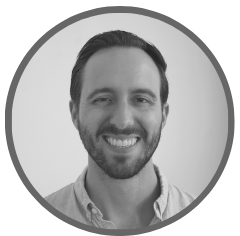
Written by
Drew Gieseke
Drew Gieseke is an aPHR®-certified marketing professional who writes about HR, compliance, and healthcare solutions.
New 2022 HSA and HDHP Limits for Contributions, Out-of-Pocket Expenses
.jpg)
The IRS recently issued new 2022 contribution limits for health savings accounts (HSA), which represent the total amount of tax-advantaged dollars that participants can deposit into these accounts. Likewise, the agency also issued new limits for high-deductible health plans (HDHP) to indicate the total amount individuals and families can expect to spend out-of-pocket on health insurance costs.
Find out what these limits are and how employers can alert employees about the changes.
What is a Health Savings Account (HSA)?
A health savings account (HSA) is a personal bank account with significant tax advantages that can be used by an individual to pay for medical expenses, typically on high-deductible health insurance plans (HDHP). A wide variety of banking institutions around the country offer these types of accounts to single users and families.
There’s a limit to the amount that a person or family can contribute to their HSA each year, as determined by the Internal Revenue Service (IRS). When identifying these maximums—which are adjusted or affirmed each year—the agency takes into account changes in the cost of living, among a number of additional factors.
What is a High-Deductible Health Plan (HDHP)?
A high-deductible health insurance plan (HDHP) is a type of healthcare coverage that requires participants to spend more on up-front costs before the insurance company begins to contribute to covering expenses. In many cases, people with HDHPs spend less per month on premiums.
Different types of healthcare coverages can be considered HDHPs. Additionally, HDHPs can be paired with HSAs to help users pay for qualified medical expenses using tax-advantaged dollars.
2022 HSA Contribution Limits
In May 2021, the IRS released 2022 cost-of-living adjusted limits for HSAs and HDHPs. These new contribution caps include:
| 2022 | 2021 | |
|
Individual Contribution Limit |
$3,650 | $3,600 |
| Family Contribution Limit | $7,300 | $7,200 |
| Catch-up Contribution Limit (for those over age of 55) | $1,000 | $1,000 |
| HDHP Max Individual Out-of-Pocket | $7,050 | $7,000 |
| HDHP Max Family Out-of-Pocket | $14,100 | $14,000 |
How Should Employers Communicate New HSA and HDHP Limits to Employees?
The IRS updates these limits each year, which means that HR teams should prepare pre-written communications using templates to alert employees about these changes.
Additionally, the IRS will likely issue new 2022 flexible savings account (FSA) and commuter benefits limits in the near future. Recent stimulus package legislation has already made temporary adjustments to FSA rollovers and dependent care FSA limits. Employers should stay up-to-date on these changes and prepare to issue similar communications to employees once available.
Likewise, HR professionals should work with trusted brokers and/or third-party administrators (TPA) to ensure that all benefits systems will accurately reflect the new limits. (Some HR tech—like all-in-one HRIS BerniePortal—automatically update this information for organizations.)

Written by
Drew Gieseke
Drew Gieseke is an aPHR®-certified marketing professional who writes about HR, compliance, and healthcare solutions.
Related Posts
Part-time work is becoming increasingly common in today’s workforce—especially for...
As you know, healthcare and benefits can be complicated, which can make the enrollment...
With the deadline for filing and distributing 1095-C forms approaching, staying...
A strong paid time off (PTO) policy helps retain current talent and attract prospective...







Submit a Comment